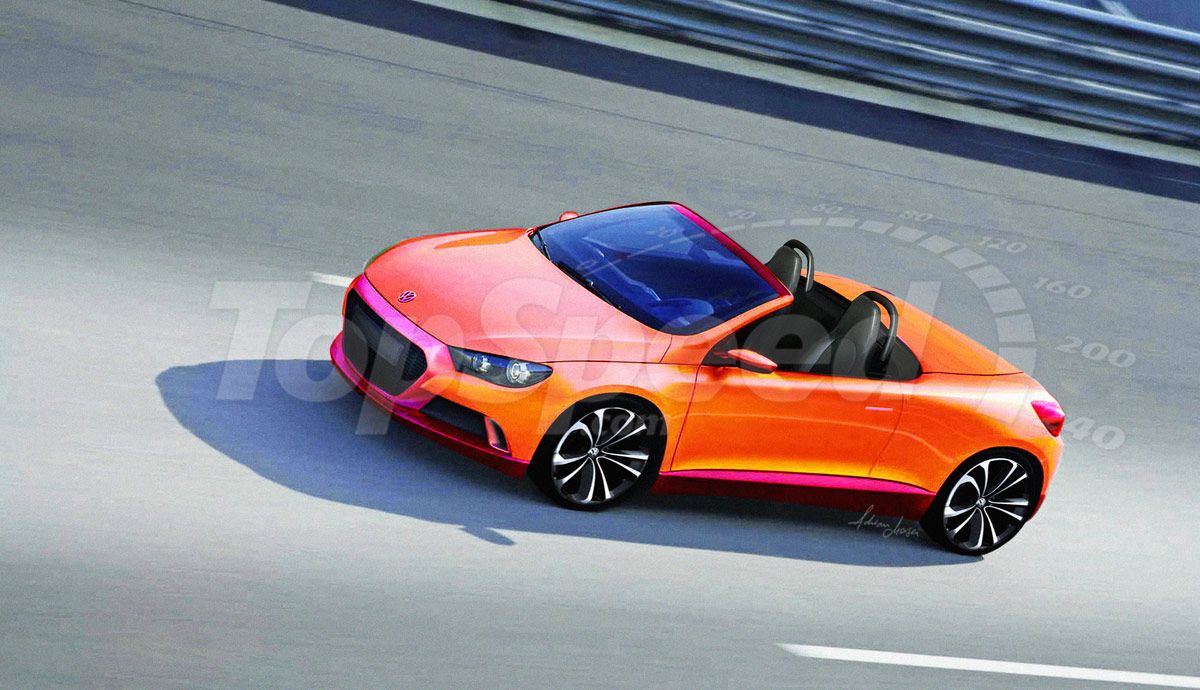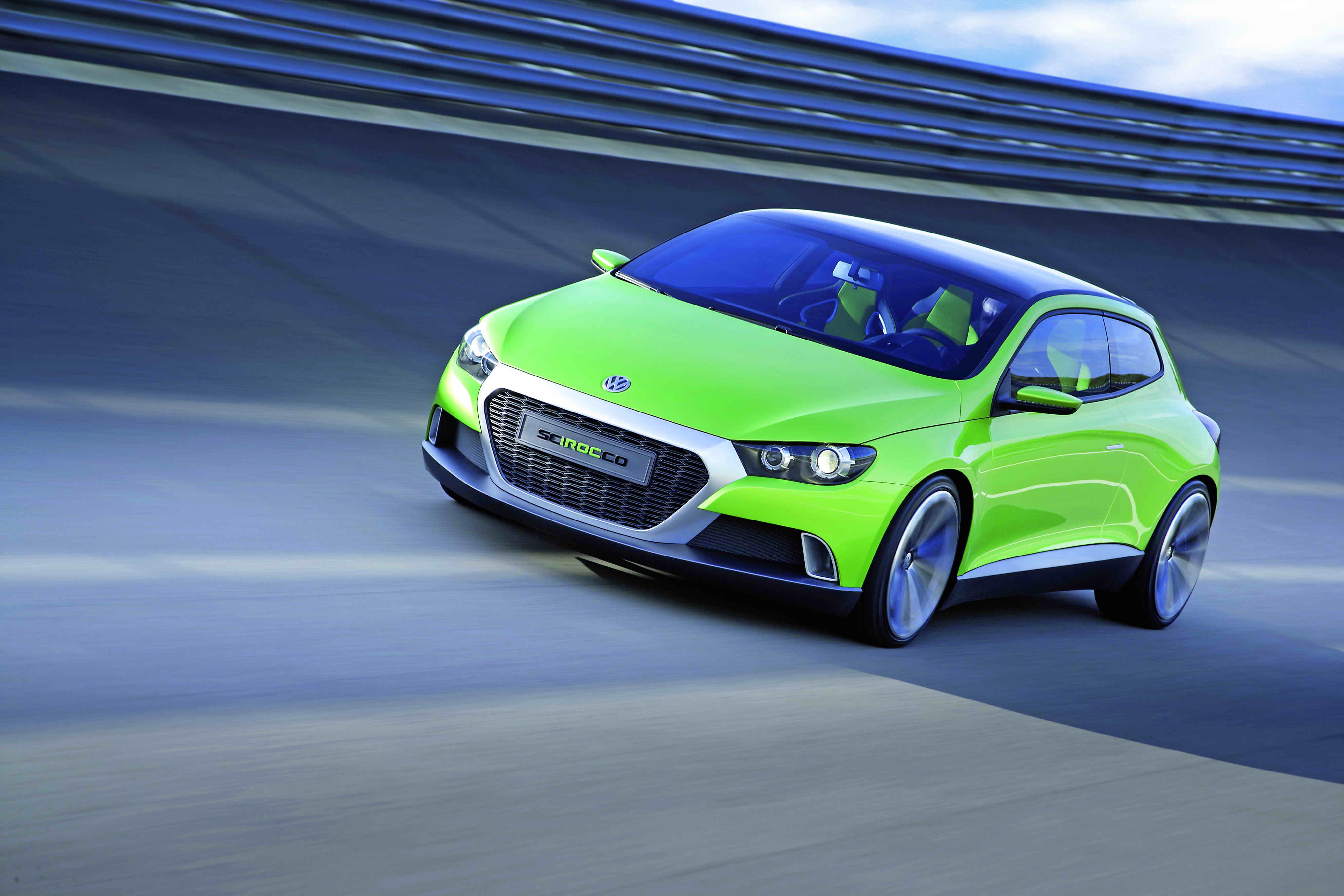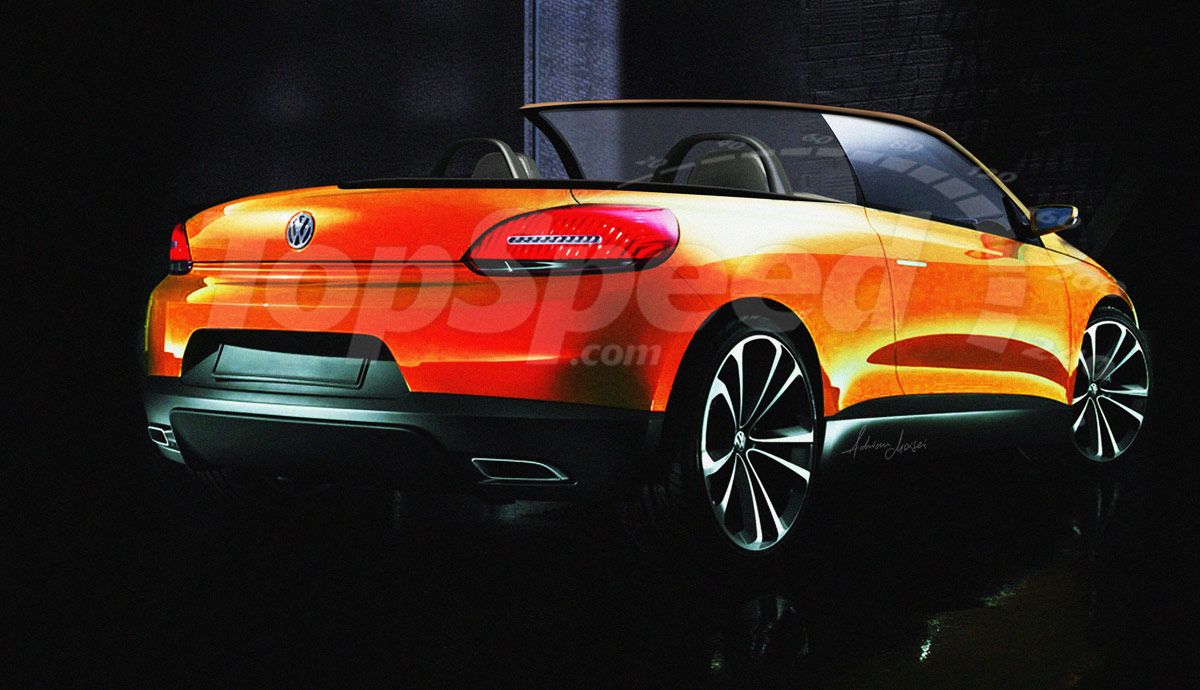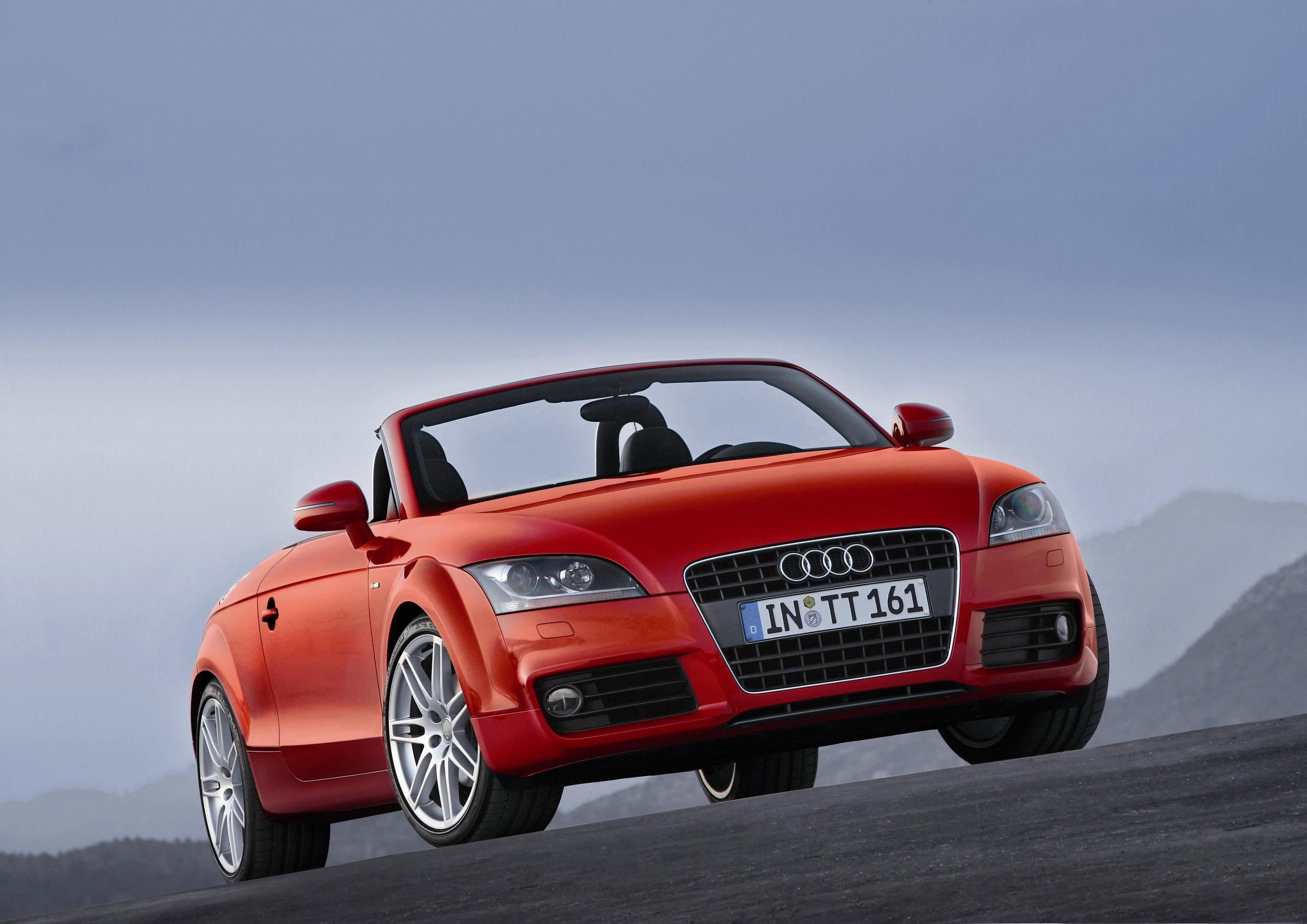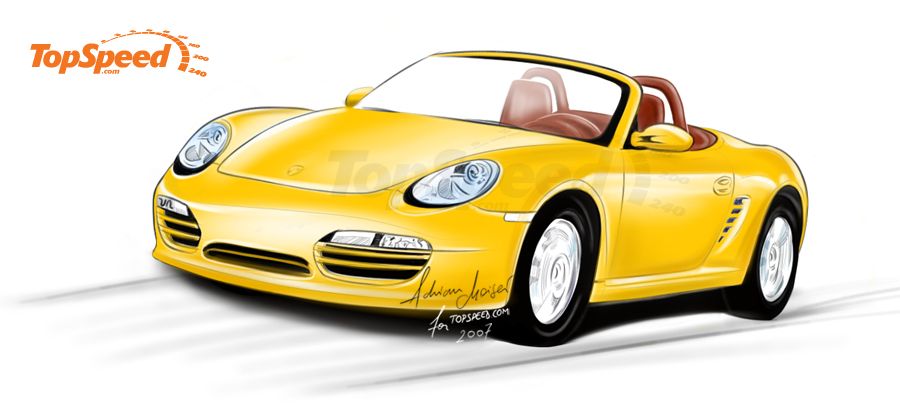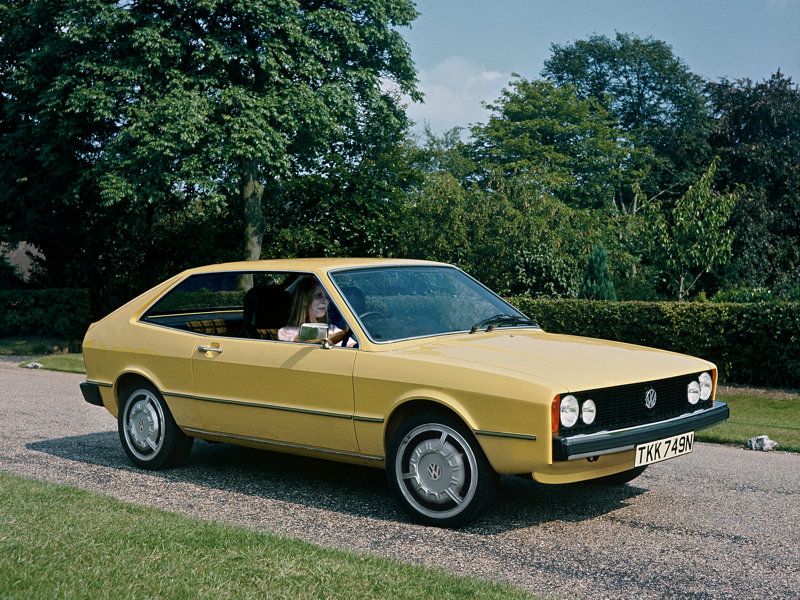Volkswagen will bring the Scirocco Coupe version next year at the Geneva Motor Show. But the company is not happy only with one version: they want to have more to say and make more competitors fear. As a result a roadster version is also in the works and will go on sale sometime in 2009, as a competitor for models like Audi TT Roadster or Porsche Boxster.
2009 Volkswagen Scirocco Roadster
- Make: Array
- Model: 2009 Volkswagen Scirocco Roadster
2007 Pontiac Solstice SD-290
- Make: Array
- Model: 2007 Pontiac Solstice SD-290
- [do not use] Vehicle Model: Array
The first Scirocco was designed by Giugiaro, built by Karmann, and sold in the States between 1975 and 1981. It was a real success all over the world. And even if the second or the third generations weren’t quite a success, the company decided to revive the affordable coupe. A preview was made at the 2006 Paris Motor Show, when Volkswagen launched the Iroc concept, which is said to be closely related to the production version from 2008.
Even if it would have been easy to tap into Scirocco’s design heritage to launch this renaissance, Volkswagen instead chose a contemporary look. Though it boasts a family resemblance to the Golf, the Scirocco’s shallow side glass and wide stance are similar to the Giorgetto Giugiaro-designed original launched in 1974.
The decision of building a roadster version comes with no surprise, as the Scirocco shares its underpinnings with the attractive Eos. The Scirocco Roadster will feature a complex folding hood mechanism, but this won’t affect the car’s distinctive styling. The rear seats are ditched to accommodate the roof mechanism.
Under the hood we will see the same engines as in the Coupe version. The entry-level models will likely get the just-introduced supercharged and turbocharged 1.4-liter Twin-charged four from the Golf GT. It pumps out 140 hp to 170 hp. Above that, a turbocharged 2.0-liter like that in the GTI can deliver 230 hp. A 2.0-liter diesel four will also slide into the engine bay, but that oil burner probably won’t come to the United States.
Volkswagen also plans a Scirocco 4Motion, probably later rather than at the initial launch of the model. Expect it to use the new 3.6-liter 15-degree V6 with 280 hp. Transmission choices will include a standard six-speed manual, with the popular double-clutch DSG unit an option.
The Roadster Scirocco will make the 0 to 60 mph sprint in less than six seconds and will have a top speed of 160 mph (est.).
Volkswagen will build the Scirocco in Portugal on the same line as the convertible Eos. The two cars share a basic mechanical package, and with key suppliers having established satellite operations on site, sources claim the new Scirocco can be produced more cheaply and with the same quality as in Germany.
-----
History
The Volkswagen Scirocco was a sporty hatchback sold by Volkswagen from 1974 through 1992. Volkswagen began work on the car during the early 1970s as the replacement for the aging Karmann Ghia coupe, and designated it the Type 53 internally. As a cost-saving method, VW choose to use the A1 chassis shared with the Golf and Jetta to underpin the new Scirocco.
Volkswagen’s evaluation code for the Scirocco was EA 398. The Golf was actually planned to be announced as the "Scirocco", the 53 would have been called "Scirocco Coupe". The Scirocco (internally known as theType 53) was announced at the Geneva show in March 1974. The Scirocco filled the spot in Volkswagen’s model lineup vacated by the elegantly styled Karmann Ghia. It was designed by Giugiaro and built by Karmann. In 1975 the Scirocco was unveiled on the North American market. Under the hood there was a 1.1 liter engine (Scirocco, Scirocco L), a or a 1.5 liter powerplant in various configurations (up to 85hp).
Volkswagen unveiled the second generation Scirocco in 1982. It retained much of the character of the earlier Scirocco, but with smoother and more aerodynamic body lines as well as more passenger and luggage capacity.
The 1982 U.S. Scirocco was powered by a 1715cc 74 hp engine from the 1981 Scirocco. 1983 U.S. Sciroccos continued with the 1.7 motor until the introduction of the Wolfsburg edition mid year. The Wolfsburg edition was equipped with high level trim and featured a 1781cc engine with a maximum power of 90hp coupled to a close ratio transmission.
In the second half of 1986 Volkswagen brought to USA the Scirocco 16v. It made the 0 to 60 sprint in a mere 8 seconds, very powerful for the era.
Scirocco sales ended in 1988 in the United States, 1989 in Canada, and 1992 in Germany.
Volkswagen Iroc Concept
A the 2006 Paris Motor Show, Volkswagen unveiled the Iroc concept, a preview version of the third generation Scirocco.
Because the Scirocco was an automotive superstar of the 70’s, styled by Giorgetto Giugiaro and equipped with four full-fledged seats, a proper trunk, large hatchback and a lot of self-esteem. The Iroc concept takes up this fascinating idea again. Purebred sports car instead of a classic coupe: However, in contrast to the original Scirocco the Iroc is no classic coupe, but a progressively designed sports car with an extremely long roof and a comparatively steep rear end. This has two advantages. Firstly: The Iroc features sharp proportions.
With its short overhangs the Iroc efficiently utilizes a wheelbase of 2,680 mm for the space provided inside. The concept is 1,400 mm high, 4,240 mm long and 1,800 mm wide.
The Iroc is powered by a TSI engine, referred to in-house as a Twincharger. Shifting tasks are handled by the DSG direct shift gearbox. About the Twincharger: First employed in the Golf GT in 2006, TSI engines are currently the most efficient four-cylinder gasoline engines in the world. The combination of compressor and turbocharger shows the path to the future.
The compressor compensates for the typical powering up weaknesses of turbo-only gasoline engines at low rpms. The turbocharger in contrast packs a mighty punch at higher revs. The combination of both superchargers in large-volume production engines is the only one of its kind in the world. The TSI version used in the concept achieves 155 kW / 210 hp. In principle, a large range of supercharged engines are conceivable for the Iroc that could start significantly under 110 kW / 150 hp.
-----
Competitors
2008 Porsche Boxster
The second generation Porsche was launched in 2004 and become available for model year 2005. The very face of the car with its new headlight design, the silhouette of the Boxster with its new, even more muscular line contours, the larger wheels, as well as the rear end with its new, even more striking joints and seams all look familiar and well-acquainted, but are nevertheless even clearer, firmer and more functional in style than before.
Comparing to 2005 Boxster, the new model will feature an updated front fascia and LED headlamps and also redesigned, and much rounder, air intakes. Also there will be new ear bumper and completely new LED taillights. These changes are also expected to appear in the next Cayman coupe.
The 2008 Boxster will feature the new technology called Direct Fuel Injection (DFI) which is supposed to lower the fuel consumption of individual models by over eight percent (NEDC). According to Porsche the DFI will increase the power on the new Boxster with 13%, so if will be to believe that, the 2008 Porsche will be powered by a Flat-6 engine delivering around 270 hp. This will help the new Boxster to sprint from 0 to 60 mph in 5.9 seconds and have a top speed of 165 mph.
2007 Audi TT Roadster
The open-top two-seater, available in two engine versions, has retained all the strengths of its successful predecessor and added even more emotion, performance and dynamism. It is a sports car built to appeal to all the senses.
Audi offers a choice of two engines for its new TT Roadster. The 3.2-liter V6 power unit generates 184 kW (250 bhp) and is coupled to the quattro drive system as standard. The 2.0 TFSI engine, which blends turbocharging with petrol direct injection technology, delivers 147 kW (200 bhp) to the front wheels. Both model variants can be ordered with the innovative S tronic dual-clutch gearbox as an alternative to the standard six-speed manual shift.
The two-liter TFSI is a real all-rounder. It responds spontaneously to the accelerator, revs up eagerly and delivers ample pulling power even at very low engine speeds. The undersquare engine puts 280 Nm of torque onto the crankshaft even at engine speeds as low as 1,800 rpm, and is able to keep this high level of torque constant up to 5,000 rpm. The nominal power output of 147 kW (200 bhp) is available between 5,100 and 6,000 rpm. The Audi TT Roadster 2.0 TFSI accelerates to 100 km/h in 6.5 seconds (in the version featuring S tronic) and on to a top speed of 237 km/h. It clocks up 100 kilometers on an average of 7.8 litres of premium-grade fuel, irrespective of transmission type.
Even more power is on tap from the V6 engine with its 3,189 cm3 capacity. Its peak torque of 320 Nm is available at engine speeds as low as 2,500 to 3,000 rpm, and its output of 184 kW (250 bhp) at 6,300 rpm. The variable intake manifold optimises cylinder filling still further. The new Audi TT Roadster 3.2 quattro with S tronic sprints from a standing start to 100 km/h in 5.9 seconds. Its top speed is 250 km/h .

